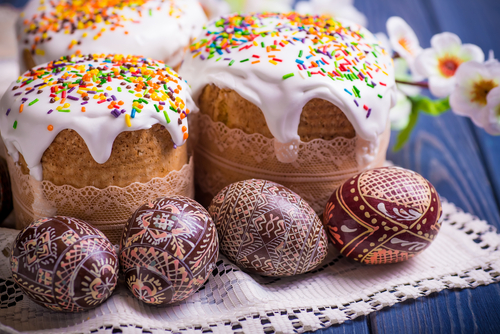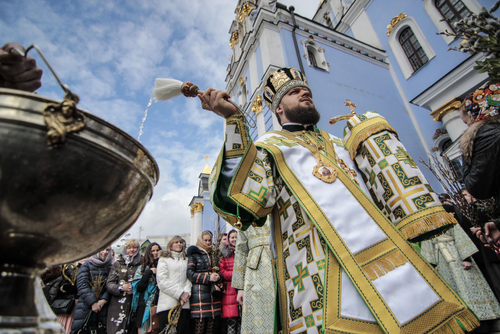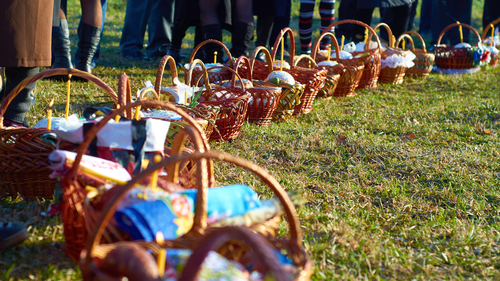Easter in Ukraine is the feast of Christ’s resurrection, which combines both pagan and Christian elements in its observance. It has been celebrated over a long period of history and has had many rich folk traditions. Easter in Ukraine is traditionally preceded by seven weeks of the Great Lent and celebrated on each first week after vernal equinox and full moon. Easter in Ukraine is called ‘Velykden’ (The Great Day).
Velykden was originally celebrated thousands of years ago as the victory of the Light over the Darkness, Day over Night, Spring over Winter. The Resurrection was celebrated only since 988, when Kiev Rus was baptized. For some time these two systems coexisted, for some time it was forbidden for people to follow heathen traditions, but later the church decided to use in its Easter ceremony the heathen customs like painting eggs and backing Easter bread (Kulich or Paska).

The last Sunday before Easter is called Palm Sunday (Verbna nedilia), when people usually bring the pussy-willow branches to have them blessed to the church. The Great Week before Easter is called the White (Bilyi) or Chare (Chystyi) Week. During this time an effort is made to finish all field work before Thursday. This day, the Chare (Chystyi) Thursday, is connected with ritual of clarification with water.
People start preparing for the holiday with painting eggs (krashanky and pysanky) and baking Easter bread as a reminding of the Bible text. According to legend, Mary Magdalene brought an egg as the first Easter gift to Tiberius, the Emperor of Rome. After she told him about the resurrection and ascension of Jesus Christ, Tiberius said: ‘It is just as impossible, as if this egg became red now’. At that moment, the egg became bright red. This color is considered to be the symbol of Jesus' blood, shed for the sake of people to have a chance for salvation. Easter cake is a symbol of the Holy Empty Tomb. Traditionally, Easter cake is prepared with cream cheese and sour cream, but nowadays the dough version of it is more popular in Ukraine.

On Good (Strasna) Friday no work is done. In some localities, the Holy Shroud (plashchanytsia) is carried solemnly three times around the church and, after appropriate services, laid out for public veneration. Saturday evening people gather in the church for the Easter vigil until the very morning when priests bless the food brought. Afterwards, people go home to celebrate Easter with their families.

All people exchange Easter greetings and give each other painted eggs (pysanky). The traditional ‘Christ is risen!’ greeting for this holy day should always be answered with ‘Risen indeed’ reply.
Easter in Ukraine is one of the biggest and most loved holidays among people because of its spiritual meaning and festive atmosphere created with beautiful traditions and cheerful mood. The Orthodox Easter in Ukraine will be celebrated on May 1 in 2016.







